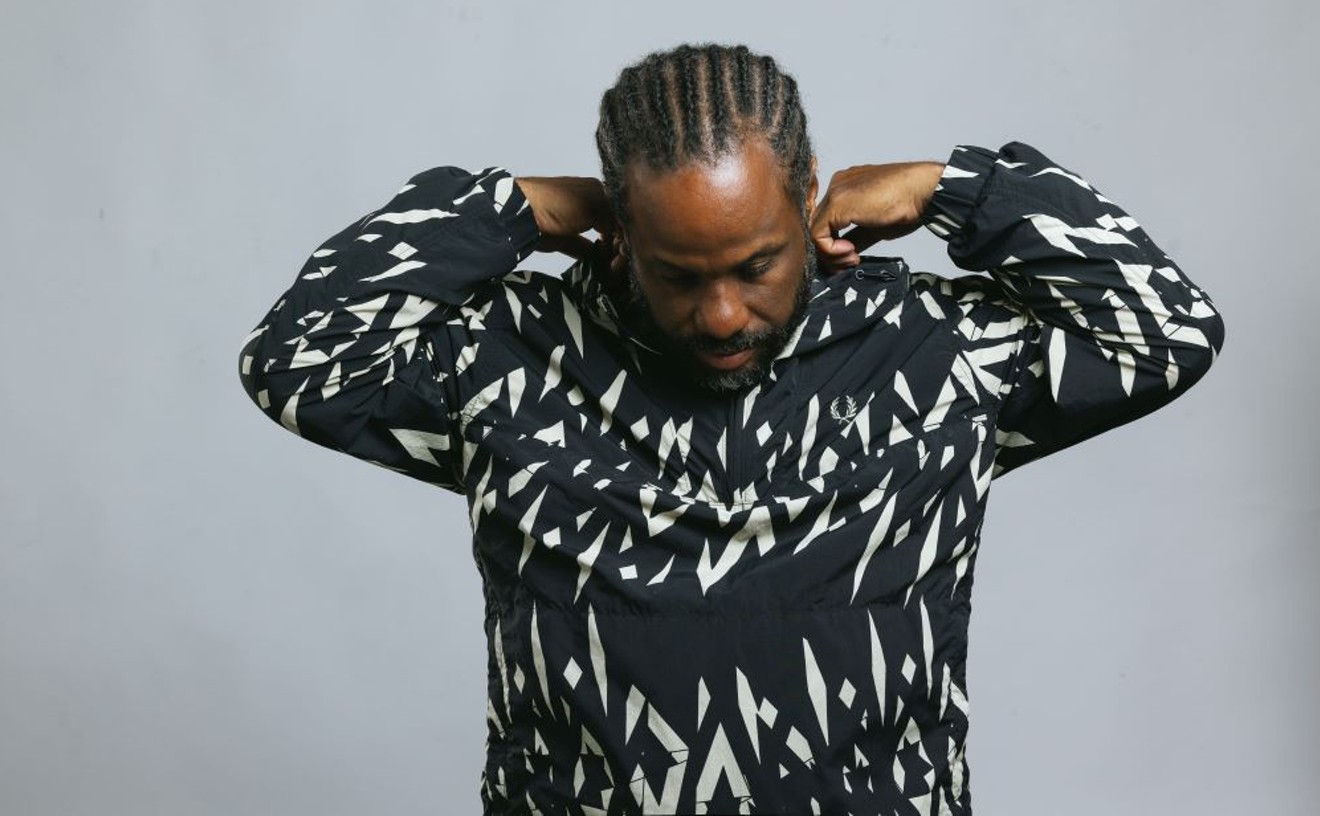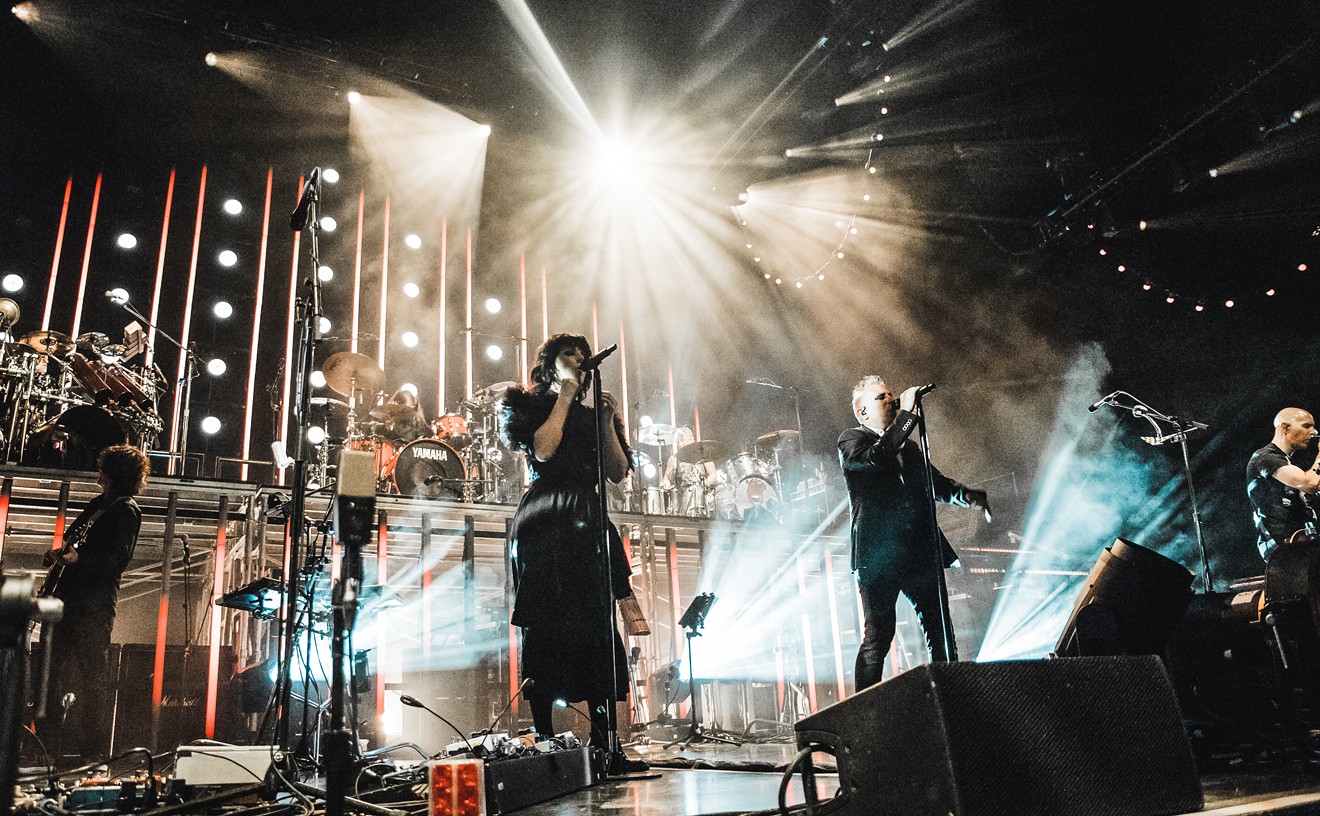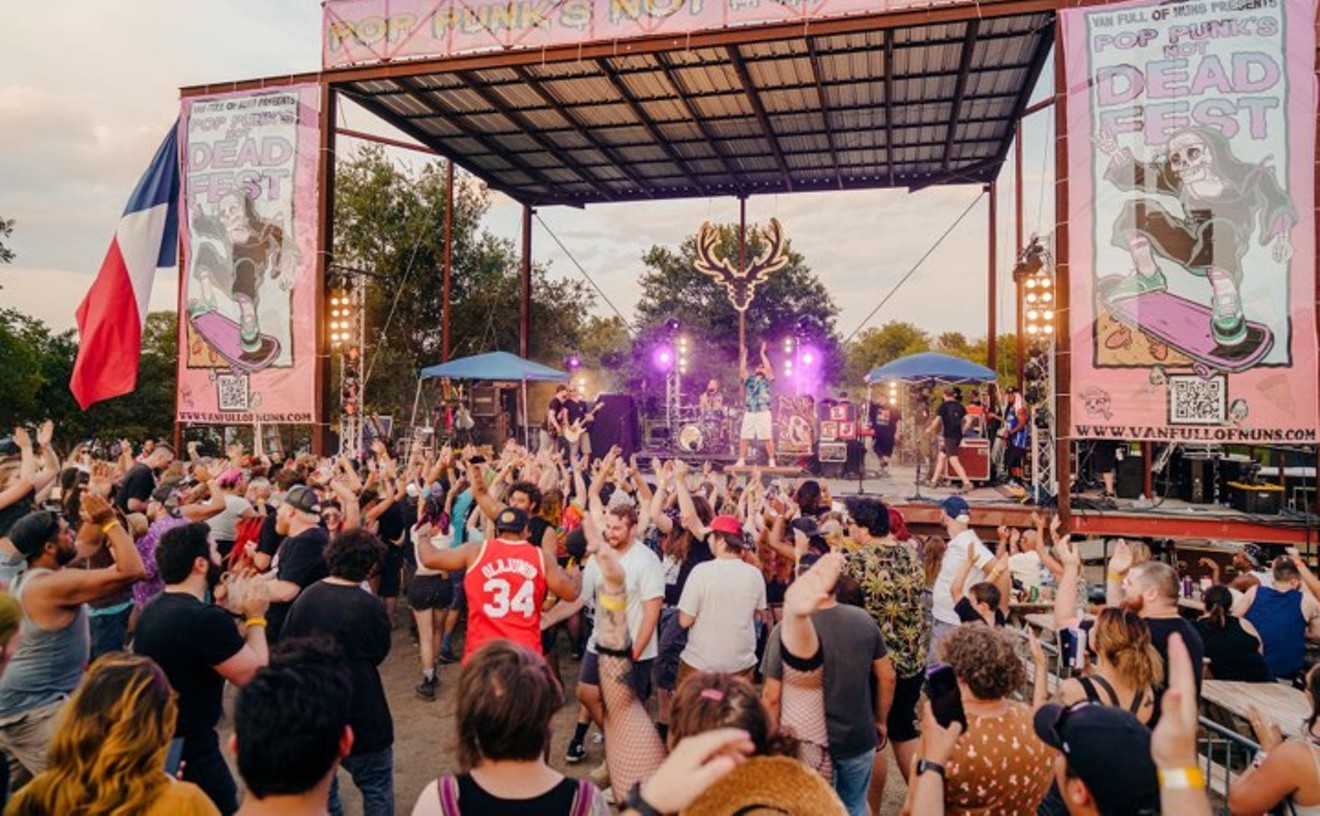Miranda Lee Richards is the daughter of artists Ted (creator of "Dopin' Dan") and Teresa Richards, whose work often graced the same earthy pages as Crumb's. Ted Richards, in fact, was once sued along with a handful of other artists by the Walt Disney Co., which is a feat Crumb himself has yet to top. At issue was the Air Pirates series, which depicted the heretofore unchronicled dope-smuggling, free-sex-and-love adventures of Disney characters like Mickey and Minnie Mouse, Goofy, Donald Duck and the standard high-profile crowd. Now that's daring. (Though the cartoons were not Richards' creation--they were Dan O'Neill's--all artists who contributed to the series were named in the 1971 suit.)
Since the laws of God and Man and Parody, and probably certain laws of physics and the time-space continuum, do not apply in Unca Walt's No-Fun Zone, Disney wrangled a "summary judgment" on its copyright infringement suit in 1978, which is a whole 'nother fascinating story (in which, to give you an example of its complexity, both sides claimed victory).
But suffice it to say that young Miranda Lee did grow up in heavy company.
"Actually," she reports, "my father and R. Crumb were sort of creative rivals when I was little. My dad was still trying to make a name for himself, and Crumb, even then, had the most name recognition of any of the artists in that scene. So he was around a lot; they moved in the same circles, but Crumb never really had anything to do with my growing up. The 'godfather' thing was something that someone had creatively worded, and then it ended up in my bio and it got reprinted all over the place. But it's not true."
What's true and not true about Miranda Lee Richards makes reading her current press all the more frustrating. For example, it's true that Richards is remarkably handsome--almost preternaturally beautiful after a Nordic model. In photographs she seems to be all face (as artists such as Marlene Dietrich and Nico in previous eras were very much face); and in performance, her appearance onstage has been reported to silence entire crowds of boozy L.A. scenesters, which is no mean feat. It's also true that her musical sensibilities and a lot of her listening tastes are rooted in California, and particularly San Francisco, the city of her birth; she speaks lovingly and frequently of those influences.
However, Richards' genetics and bone structure have tended to mix too easily with her music in the minds of many sidelong observers, with the unfortunate result that--if one didn't know much else about her and hadn't heard her debut release, The Herethereafter--one might mistakenly perceive her as a spaced-out throwback to a bygone era, a genre artist three decades too late, a new-millennium (gasp!) hippie chick. Wrong, and wrong.
"I guess it has to do with how you define the word," she says carefully when asked about the word psychedelic, which occurs frequently in interviews and articles about her. "When I think of 'psychedelic,' I think about backwards guitars, bells, lots of effects...sort of 'folk plugged in,' like Donovan's 'Hurdy Gurdy Man' or the Fairport Convention, the Mamas and the Papas. I don't really mean, like, the Jefferson Airplane...although I love Grace Slick; I love the band's early stuff. So much music now, groups like Mercury Rev and Spiritualized, pays a lot more attention to the depth of the sound in the recording. That's what I mean when I say psychedelic. Music where the songs have a little more space to them."
There is a great deal of space on The Herethereafter, in both its sound and its subject matter. Inner space and the spaces between people are Richards' primary concerns on songs like "The Beginner" ("I'm improvising as I go along/I got no excuses if it all goes wrong") and "Last Solstice of the 70s" ("You/Don't have much to say/And I/Throw words away"). Lyrically, Richards' songs run the gamut, from straight reportage of faulty connections to poetic expressionism; at least once, on the expansive cut "Seven Hours," she proves herself capable of near-Dylanesque inscrutability without ever coming off obtuse. And there's a cover of the Stones' little-known gem "Dandelion" that's almost worth the price of admission by itself.
"These songs, really, are written in a kind of classically singer-songwriter way," Richards says at one point. "I wanted to build a reputation as a songwriter [with The Herethereafter]." It's a fair bid, an album whose ethereal lyricism compares favorably with records such as Mazzy Star's Among My Swan and the Innocence Mission's Glow. But like those albums, The Herethereafter tricks up solid songwriting with a grab bag of mixing effects and production touches--"the ear candy," as Richards rightly puts it--which is, finally, the point where her album comes to touch upon psychedelia in a most satisfying way.
The Herethereafter is a detailed and heavily produced album, and it took just less than a year of careful work to assemble. "We're all perfectionists," says Richards of the team that assembled it (a roster of some of L.A.'s most respected, if not most popularly recognized, musicians), "and I'm not even one to the extent that some of the other people are. I really wanted each song to be kind of a perfect, finished piece. Of course, they're not," she says with a laugh, "but we did pay a lot of attention to the elements as they came together, like what was going where. We were able to add a lot of stuff in the mix and decide what was working and what wasn't."
The bulk of their post-recording time, Richards reports, was spent subtracting, and so The Herethereafter went through a number of significant changes before it achieved its final form.
"Since we spent almost a year on it, from songwriting to release, a lot of things changed several times. One thing was, we ended up with way too much...just too much stuff on each track, effects and overdubs and that kind of thing. Even our producer [Rick Parker, who also plays on the album and in Richards' live show] kept putting more things in, and I'd be saying, 'Please, stop, it's finished!' even though it was actually a lot of fun to try out. So by the time we got to where we were mixing it, we were essentially editing, taking out a lot of elements. The strings were the very last part to get added, and they're what really changed the sound of the record, I think."
The final product recalls Richards' mention of "plugged-in folk"; though the album was carefully (and very audibly) crafted, The Herethereafter maintains a freewheeling spontaneity in its performances throughout that keeps it from sounding too tightly controlled.
Of course, solid production values are a moot point when the music itself is pedestrian. But Richards, happy to report, is a confident and skillful songwriter, a talent honed by years playing and performing around the Los Angeles scene.
"I never really had a steady live performance schedule. I would just get up with different people when I could," she says. A vocal stint with the Brian Jonestown Massacre in 1997 brought her a somewhat higher profile, and she eventually contributed songs to two BJM releases, Give it Back and Bringing it All Back Home Again. As the central creative force on her debut album, however, Richards stands or falls on her own merits, and The Herethereafter succeeds largely by virtue of her considerable songwriting skill.
Perhaps because so many of her recent endeavors have been centered around notions of "space," Richards finds herself acutely aware of the places through which she's moving these days. She's on her first extended tour, picking up new vibes in new places; and, as a transplanted San Franciscan--having moved to Los Angeles in 1995, just before her 21st birthday--she finds herself newly receiving unique benefits from both cities.
She thinks for a moment. "That was really an important part of moving to L.A., for me. Being able to do other jobs while I was getting my music together. In San Francisco I was going to have to work at a clothing store or something.
"L.A. is really fun in its own right," she continues. "It's a major city, which makes it a lot more cosmopolitan, and of course everyone who lives there or moves there is bringing their own art and culture to it. And because the rents are cheap, it brings in a lot of young people, so everyone's trying out lots of different things, and there are a lot more ways to make money. But if you are genuinely focused and you're trying to make something happen in the entertainment business, it's really the only place to be.
"But the two cities are so different," she continues emphatically. "San Francisco has a lot of soul and character; its public transportation system is still in effect, and you can walk everywhere if you want. There's a whole intellectual scene that's unique to the area. Los Angeles mainly runs on the entertainment-capital-of-the-world thing, but in San Francisco when you're out in the city you'll see little kids, and old people, and all different kinds of people, which is 'real life,' you know? In Los Angeles...not so much. People in San Francisco in general are very soulful; the city kind of has a better vibe in the air, more electric. Like a lot of coastal cities have, I think. You get the wind in off the ocean, all that energy..."
She trails off, considering other spaces. "It makes a huge difference in the feel. So open."










